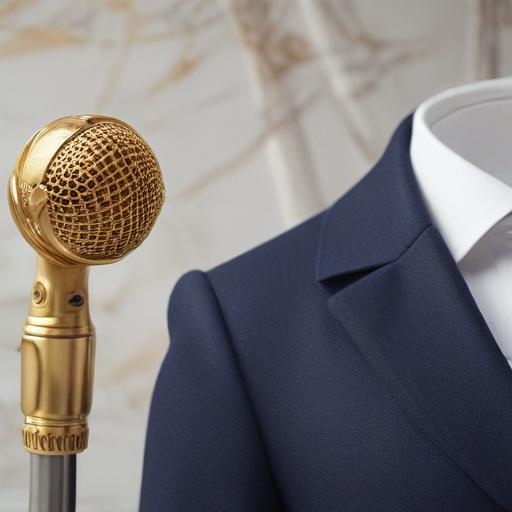John F. Kennedy Jr. was a rare blend of glamour and public life, a man whose style and presence bridged politics, celebrity, and culture in a way few have managed. Even years after his death, the allure of his persona lingers as a lasting chapter in American fashion and public storytelling.
Friends and biographers remember a man who, off-camera, rarely cared about appearances, yet in public could embody an era. Steven M. Gillon, who wrote a biography about Kennedy Jr., notes that John could appear sloppy in everyday life, throwing on clothes that didn’t always match. But he could clean up exceptionally well—an influence his mother, Jacqueline Kennedy Onassis, helped cultivate. His wife, Carolyn Bessette Kennedy, followed suit, shaping a refined, understated elegance that kept Kennedy Jr. in the cultural spotlight long after his New York Presidency of style faded into memory.
The fashion conversation around him isn’t just about clothes; it’s about a family legacy and a moment in time. The influence of Jackie Onassis and Carolyn Bessette Kennedy helped define a visual language of elegance that Kennedy Jr. embodied even when not trying. Friends and fashion observers describe him as someone who could appear effortless, but whose polished moments were a deliberate nod to the era’s standards of chic diplomacy.
Today, Kennedy Jr.’s life and style are being revisited in pop culture. CNN is airing a three-part series, American Prince: JFK Jr., that digs beneath the surface of his public persona, while FX is developing American Love Story, a show retelling his relationship with Carolyn. The public appetite for his story mirrors ongoing nostalgia for the ‘90s era when fashion, media, and politics began to intertwine more visibly.
The memorabilia market has also kept his fashion footprint alive. Bonhams recently staged an auction of clothing tied to Kennedy Jr., offering items such as a Calvin Klein tuxedo, a Calvin Klein two-piece suit, a black-tie ensemble, and a Giorgio Armani overcoat from the 1990s. The wardrobe’s origins trace back to his relationship with Carolyn, who had worked for Calvin Klein before becoming his wife. The couple met in 1992 in the VIP fitting room of the brand, a moment that symbolized the marriage of fashion industry culture and political dynasties.
Observers also highlight the two generations of influence around him. Carole Radziwill, who knew the couple, notes that Kennedy Jr. didn’t obsess over a singular personal style; he looked good in whatever he wore. Carolyn Bessette Kennedy, she adds, served as a stabilizing influence, much as Jackie did, shaping how he presented himself to the world.
Kennedy Jr. was a quintessential New Yorker of the era—an archetype of the city’s stylish, media-savvy man. Photographs show him exercising topless in Central Park, strolling TriBeCa with a bandage on his hand, and cycling through the city in a blazer with rolled-up pants and white socks. He earned nicknames like “the daredevil” and “the prince of America” from admirers who saw in him the city’s glamorous tempo and fearless spirit. His fashion sense blended European sensibilities with American practicality, from a beret paired with a zip-up sweater to a waistcoat worn over a printed shirt and tailored slacks. His upbringing—a mix of American and European influences—shaped a look that felt both refined and approachable, a visual language shaped by his travels to Skorpios with Jackie and by the jet-set milieu he inhabited.
Kennedy Jr. also left a track record as a modern cultural figure who could influence design beyond his own clothes. Designers have cited him as a muse; for instance, the film Challengers features a T-shirt drawn from his own style that Zendaya wears, echoing the broader fashion influence he carried during the decade.
Beyond fashion, his public life made bold moves into political media. When he launched George, his political magazine, he wasn’t afraid to push boundaries—posing nude under a tree in its September 1997 issue, complete with a dangling apple. The provocative image challenged conventions about how politics and celebrity could intersect, inviting readers to reconsider the seriousness and accessibility of political discourse.
A lasting reminder of his broader impact is the way JFK Jr. remains a symbol of the era when public life and style began to fuse into a single, media-driven narrative. He was more than a famous name; he became a lens through which designers, writers, and audiences explored how clothing, personality, and public service could influence one another.
Summary of his legacy: JFK Jr.’s persona captured a moment in American culture when politics, fashion, and celebrity collided, leaving an enduring influence on how public figures present themselves and how style can function as a form of diplomacy. His life continues to inspire documentaries, fashion retrospectives, and pop-culture conversations about the power of elegant restraint and the modern myth of the handsome, charismatic public figure.
Additional value and perspective:
– Kennedy Jr.’s story underscores how a public figure’s personal style can become a national conversation about taste, credibility, and identity, especially when framed by a powerful family history.
– The ongoing interest in his life through documentaries and exhibitions suggests a continued appetite for nuanced portraits that balance glamour with the complexities of public service.
– For readers, the narrative offers a hopeful angle: fashion can be a bridge between private identity and public life, allowing audiences to see public figures as multifaceted people rather than symbols alone.
If you’d like, I can add a brief timeline of key moments (meetings with Carolyn, major public appearances, and the George magazine milestones) to help readers quickly navigate Kennedy Jr.’s life and legacy.
